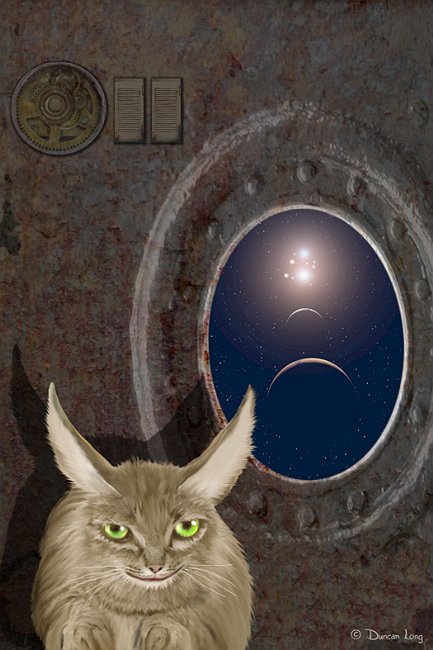How Do You Create Your Book Cover Art?
filed in Book Cover Illustrations and Artwork on Sep.17, 2009
People regularly ask what software and hardware I use for creating book cover illustrations and other artwork for magazines, CD covers, and interior illustrations in books. So I will digress in this installment of my blog to answer those questions.
I come from a background of working with pen and ink as a technical writer/illustrator. I started using the computer for digital illustrations some time back, got a Wacom tablet, and have never looked back since, my pens, drafting table, and t-square all collecting dust and going unused since (it seems a little sad to think of those beautiful drawing instruments sitting in a box – but not so tragic when I recall ink smears and the hours of back-breaking labor).
For some years I’ve been doing my work with Corel Photo-Paint (version 8, designed for Windows 95 but still working on XP Pro). The plus of sticking with this version of a program for nearly a decade is that I’ve created my own shortcuts and such and am really familiar with the program, its quirks, and what will cause it to glitch.
This means I can concentrate on making art, not worrying about getting the software to do what I want. And it will be a sad day when I have to retire the software and move to a new program or version. (Thus far, nothing has tempted me too much.)
Although PhotoPaint was created with an eye toward photo retouching and such, it is marvelously “deep” and quite capable of producing original artwork, with oil/ink/pencil/water color brushes, swirl brushes (great for clouds and blending), smear brushes (great for pushing pixels around), etc. It can also accommodate most Photoshop plugins. It can export/import JPG, TIF, PNG, and Photoshop formats.
Using PhotoPaint, I don’t run into many problems working with clients. When I need to do graphic design/layout work or produce a PDF for a press, then I trot out PagePlus which is about a tenth the cost of Adobe’s counterpart; PagePlus lacks some bells and whistles, but still is quite capable and can format to a variety of PDF compatibility modes including the more-or-less standard X-1 and X-1a formats.
To create a PDF around a book cover illustration, I simply drag and drop the JPG (or TIF or whatever) produced in PhotoPaint into PagePlus, resize it, and am good to go with the layout work over that.
I seldom work with vector artwork; when I do I either employ DrawPlus or (I know this is strange) FontCreator, the latter accommodating copy and paste of a bitmap picture produced in PhotoPaint into its character creator section; this creates an instant vector in FontCreator that can then be “typed” as a letter once that font is installed.
(And this TTF file also can be given to a client, so a logo or other vector artwork can be installed on the client’s computer as a TrueType Font file.)
Once in a while I’ll render a scene in 3D with Vue. But I am doing that less and less, finding it quicker to just paint what I want to see (the exception are scenes with columns, ships, or other vehicles that have complex shapes and shadows).
I generally mask the rendered picture and paint in new clouds, grass, texturing, and so forth. In the end there’s little of the original render to be seen. I have Poser but use it only rarely these days.
Of course all my software and hardware choices get no respect from my Apple/Adobe-equipped peers (and rightfully so, perhaps). I have even had one art director tell me it was impossible to do what I was doing with what I am using (go figure).
But it seems suitable to me because I can work very quickly with it, and would probably not switch to a more conventional arrangement unless perhaps some kind soul in the Mac and Adobe Universes took pity and offered me the replacements for free.
And even then I might pass.
I hate scanners, so my work is digital from the first sketches to the completion of the project. I am on my second WACOM tablet that is about indispensable for my work.
There. I have revealed all my secrets and given everyone more than they could ever possibly want to know about my work.
And yet you read it all, didn’t you.
You can see more of my book cover illustrations, CD album cover art, and magazine illustrations at my illustration gallery.
